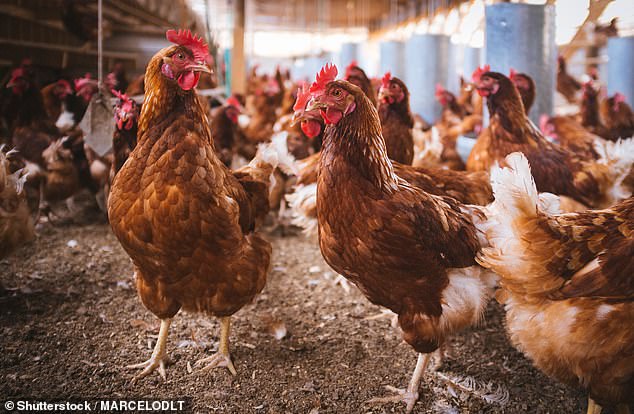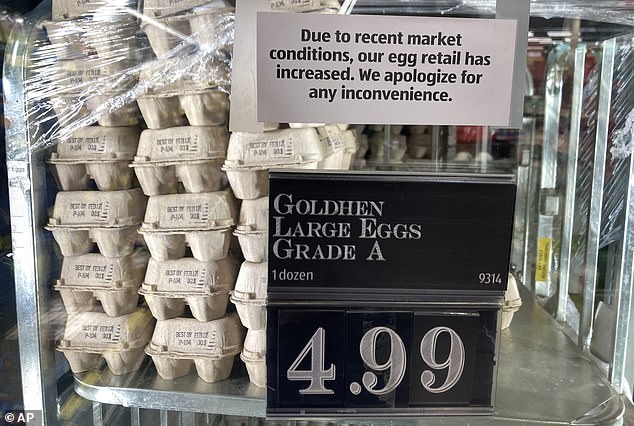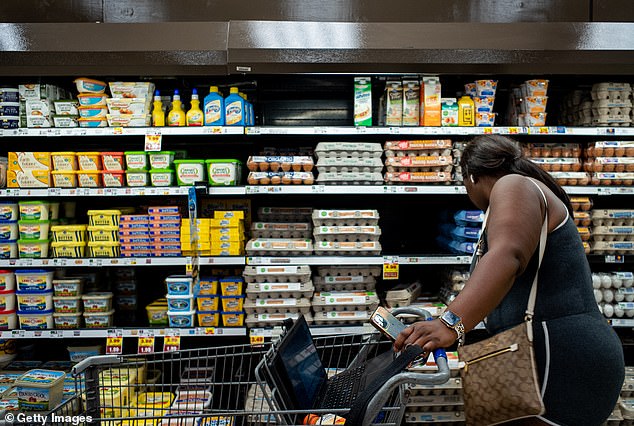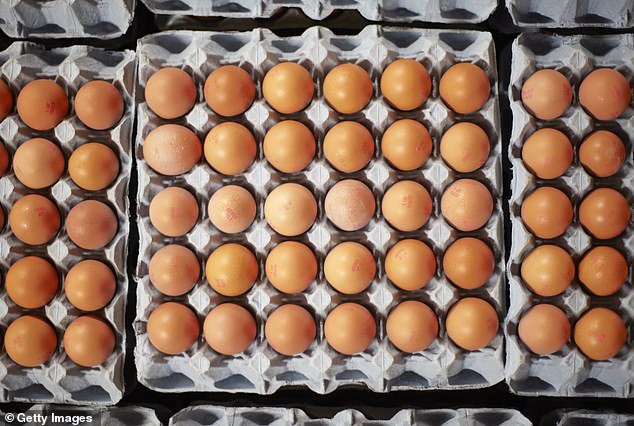Is this the return of Eggflation? Price of a dozen jumped 10% in a WEEK due to Avian flu – fears of return to $5 dozen
Last winter, a double whammy from the worst bird flu outbreak in years, farmers facing high feed and fuel costs saw prices for a dozen rise above $5 for the first time.
Since then, prices have fallen steadily, but according to Datasembly analysis for DailyMail.com, it appears that 'eggflation' has returned in the US.
Egg prices rose 11.4 percent in November, but most of that happened last week, when they rose 8.6 percent.
Typical prices for the cheapest packs of 12 are now around $2 at major supermarkets, up from $1.75 a month ago.
Last winter, egg prices rose above $5 per dozen. Cartons of eggs went on display at HarvestTime Foods in Chicago last January

Entire flocks of poultry were killed last winter when just one case of bird flu was discovered to prevent the possible spread of the highly contagious disease
Experts are hopeful that this year's outbreak will not be as bad as last year, and that producers will not face the same cost pressures. Families also eat less, which reduces demand.
Eggs saw by far the biggest increase among foods and beverages, according to Datasembly, which produces a monthly “grocery price index.” DailyMail.com exclusively releases November figures.
Food prices rose 1.3 percent overall in November, compared to October.
With the exception of eggs, most food and drink prices remained stable month over month. Frozen products rose by 0.8 percent, mainly thanks to frozen meals, which rose by 1.3 percent
Dairy products – such as milk and butter – rose by 0.7 percent for the second month in a row.
But cheese actually declined: by 1.2 percent. Alcohol also fell by 0.3 percent in November compared to October.

LA supermarket in Cheverly, Maryland, posted a sign apologizing for the higher price of their eggs last winter
Brad LaRock, VP of Marketing at Datasembly, said: “Our grocery price index shows that inflation in the grocery sector cooled and even declined in September.
“However, the egg category is growing.”
Egg price increases vary dramatically across America – and also between major cities and remote rural areas.
The biggest increases in Datasembly's data occurred in Phoenix, Minneapolis and Des Moines, where prices rose 20.3 percent, 21.5 percent and 22.9 percent, respectively.
Meanwhile, Albany, New York and Detroit saw the smallest increases at 3.9 percent, 5 percent and 5.6 percent, respectively.
Last winter, egg prices rose in price. An ongoing outbreak of bird flu, combined with rising feed, fuel and labor costs, pushed prices for a dozen above $5.

Egg prices rose by more than 10 percent in November

Fears that egg inflation has returned as prices rose led to fears they could rise further
Americans can be thankful they don't live in Russia, where they are sold individually after costs have risen even further.
Egg prices in Russia rose 13 percent in October and a further 15 percent last month, according to the Daily Telegraph reporting on Russia's statistics agency. All together they have increased by 42 percent in one year.
Shops in Moscow, Novosibirsk and Orenburg sell loose eggs for between nine and twenty rubles (10c to 22c). Wages are a fraction of what they are in the US, especially in rural areas, making such amounts unaffordable.
A shopkeeper said: 'Two hundred rubles for a will of a dozen eggs puts off buyers.'
The Kremlin has ordered stores to limit egg price increases, ordered officials to increase supply by ordering more and ordered officials to raid warehouses for supplies.
